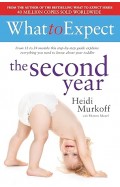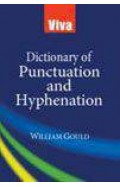Tomorrow's People - The Future of Humanity in Ten Numbers
By: Paul Morland
-
Rs 2,035.75
- Rs 2,395.00
- 15%
You save Rs 359.25.
Due to constant currency fluctuation, prices are subject to change with or without notice.
The great forces of population change – the balance of births, deaths and migrations – have made the world what it is today. They have determined which countries are superpowers and which languish in relative obscurity, which economies top the international league tables and which are at best also-rans.
The same forces that have shaped our past and present are shaping our future. Illustrating this through ten illuminating indicators, from the fertility rate in Singapore (one) to the median age in Catalonia (forty-three), Paul Morland shows how demography is both a powerful and an under-appreciated lens through which to view the global transformations that are currently underway.
Tomorrow’s People ranges from the countries of West Africa where the tendency towards large families is combining with falling infant mortality to create the greatest population explosion ever witnessed, to the countries of East Asia and Southern Europe where generations of low birth-rate and rising life expectancy are creating the oldest populations in history. Morland explores the geographical movements of peoples that are already under way – portents for still larger migrations ahead – which are radically changing the cultural, ethnic and religious composition of many societies across the globe, and in their turn creating political reaction that can be observed from Brexit to the rise of Donald Trump. Finally, he looks at the two underlying motors of change – remarkable rises in levels of education and burgeoning food production – which have made all these epochal developments possible.
Tomorrow’s People provides a fascinating, illuminating and thought-provoking tour of an emerging new world. Nobody who wants to understand that world should be without it.
The great forces of population change – the balance of births, deaths and migrations – have made the world what it is today. They have determined which countries are superpowers and which languish in relative obscurity, which economies top the international league tables and which are at best also-rans.
The same forces that have shaped our past and present are shaping our future. Illustrating this through ten illuminating indicators, from the fertility rate in Singapore (one) to the median age in Catalonia (forty-three), Paul Morland shows how demography is both a powerful and an under-appreciated lens through which to view the global transformations that are currently underway.
Tomorrow’s People ranges from the countries of West Africa where the tendency towards large families is combining with falling infant mortality to create the greatest population explosion ever witnessed, to the countries of East Asia and Southern Europe where generations of low birth-rate and rising life expectancy are creating the oldest populations in history. Morland explores the geographical movements of peoples that are already under way – portents for still larger migrations ahead – which are radically changing the cultural, ethnic and religious composition of many societies across the globe, and in their turn creating political reaction that can be observed from Brexit to the rise of Donald Trump. Finally, he looks at the two underlying motors of change – remarkable rises in levels of education and burgeoning food production – which have made all these epochal developments possible.
Tomorrow’s People provides a fascinating, illuminating and thought-provoking tour of an emerging new world. Nobody who wants to understand that world should be without it.
The Human Tide: How Population Shaped the Modern World - Paperback
By: Paul Morland
Rs 1,355.75 Rs 1,595.00 Ex Tax :Rs 1,355.75
Tomorrow's People - The Future of Humanity in Ten Numbers
By: Paul Morland
Rs 2,497.50 Rs 4,995.00 Ex Tax :Rs 2,497.50
Tomorrow's People - The Future of Humanity in Ten Numbers
By: Paul Morland
Rs 2,035.75 Rs 2,395.00 Ex Tax :Rs 2,035.75
Zubin Mehta: A Musical Journey (An Authorized Biography)
By: VOID - Bakhtiar K. Dadabhoy
Rs 892.50 Rs 1,050.00 Ex Tax :Rs 892.50
Viva Dictionary Of Punctuation And Hyphenation
By: William Gould
Rs 127.50 Rs 150.00 Ex Tax :Rs 127.50
And Another Thing... (The Hitchhiker's Guide to the Galaxy)
By: Eoin Colfer
Rs 355.50 Rs 395.00 Ex Tax :Rs 355.50
Collins Pocket Italian Dictionary
By: Collins Dictionaries
Rs 1,847.50 Rs 3,695.00 Ex Tax :Rs 1,847.50
No similar books from this author available at the moment.
Katerina the Cat and Other Tales from the Farm
By: Michael Morpurgo
Rs 1,435.50 Rs 1,595.00 Ex Tax :Rs 1,435.50
Legion of Super-heroes: The Great Darkness Saga
By: Paul Levitz
Rs 4,945.50 Rs 5,495.00 Ex Tax :Rs 4,945.50
Zubin Mehta: A Musical Journey (An Authorized Biography)
By: VOID - Bakhtiar K. Dadabhoy
Rs 892.50 Rs 1,050.00 Ex Tax :Rs 892.50
The Human Tide: How Population Shaped the Modern World - Paperback
By: Paul Morland
Rs 1,355.75 Rs 1,595.00 Ex Tax :Rs 1,355.75
Tomorrow's People - The Future of Humanity in Ten Numbers
By: Paul Morland
Rs 2,497.50 Rs 4,995.00 Ex Tax :Rs 2,497.50
Tomorrow's People - The Future of Humanity in Ten Numbers
By: Paul Morland
Rs 2,035.75 Rs 2,395.00 Ex Tax :Rs 2,035.75












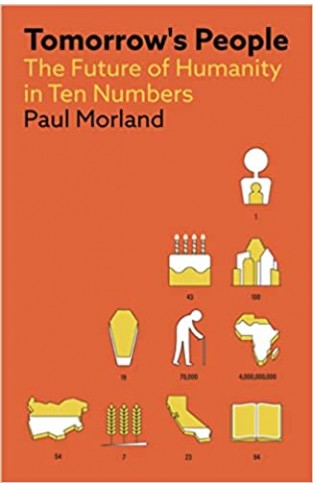

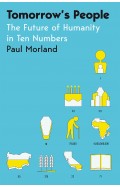
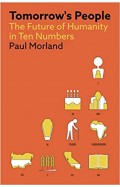
-120x187.jpg?q6)





